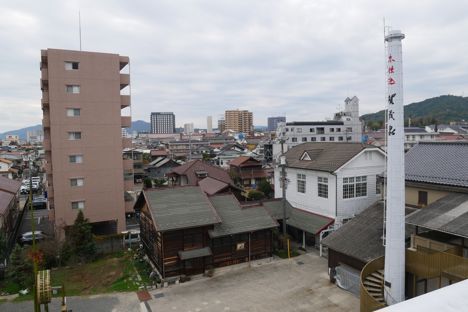
What to eat and drink in Hiroshima, Japan
Sake, oysters and okonomiyaki are what the Japanese city of Hiroshima is famous for, as Chris Osburn discovers during his stay. Find out why this part of Japan is becoming a hotspot for fantastic food.
View more from this series:
Flavours of JapanWrapping up my time in Kobe, I hopped onto the Shinkansen (bullet train) en route to the other city on my Japanese agenda: Hiroshima. Here I divided my time between the city centre and Miyajima, a small island a few miles offshore in the midst of Hiroshima Bay. As in Kobe, the food in Hiroshima was fantastic. And despite a tight schedule with plenty of sightseeing I managed my best to consume with craven curiosity. Here are the culinary highlights of my few days there.
Hiroshima oysters
What beef is to Kobe, oysters are to Hiroshima. Big and sweet, they’re farmed in Hiroshima Bay and prepared in all sorts of delicious ways. I gobbled down as many as I could: grilled, fried and of course raw. I even got to go out on a boat to see how they’re farmed with Shimada Oyster Farm to its beds and then back to dry land for breakfast in an oyster hut.
Sixty percent of Japan’s oysters come from Hiroshima, and Shimada is responsible for 20,000 tonnes alone, with 100 lines of oysters harvested daily from October through May. I did my darnedest to put a dent in their supply with efforts to down as many as possible during my breakfast of freshly harvested oysters grilled on the spot, followed by oyster congee (rice porridge).
Other opportunities to slurp down oysters included a traditional dinner at Enishi, a restaurant on the island of Miyajima, where options included raw or battered. Wherever I roamed while sightseeing on Miyajima, I was never far from a vendor grilling oysters on the street.
Okonomiyaki
Even more popular than oysters in Hiroshima is okonomiyaki. These savoury pancakes are ubiquitous throughout Japan, but folks in Hiroshima do theirs a little differently. Whereas most places in the country have a method more akin to scrambling eggs when making okonomiyaki, in Hiroshima the preferred way is to cook ingredients (such as cabbage, eggs and noodles) separately, stack them in layers and then cover with heaps of okonomiyaki sauce (a little like a thick Worcestershire sauce), mayonnaise and bonito flakes.
As delicious as Hiroshima-style okonomiyaki is, I discovered it’s not hard to make at the Okosta Okonomiyaki Experience. Conveniently situated next to Hiroshima Station, the class was casual, fun and taught in both English and Japanese. Since returning from Japan, I’ve made okonomiyaki for myself a few times, trying my best to go easy with the sauce I bought from the school’s shop so it lasts as long as possible.
Sake
As Kobe has its Nada sake district on the edge of town, Hiroshima boasts its own nearby cluster of breweries in Saijo. Referred to as ‘Sake Town’ or the ‘City of Sake’, Saijo is a neighbourhood in Higashihiroshima, the next metro area over from Hiroshima and only about thirty minutes from Central Hiroshima by train. There are eight sake breweries lined up next to one another here, each one open to visitors for tours and tastings. I dropped by two: Kamotsuru and Kamoizumi.
Kamotsuru’s main claim to fame is that it was the sake Japan’s Prime Minister Shinzō Abe chose to offer President Barack Obama when he visited in 2016. Kamoizumi was founded in 1912 and is considered the new kid on the Saijo block in a place where sake has been brewed for centuries. However, the family-owned neophyte is famous for strictly adhering to traditional sake-making methods. The facilities at Kamoizumi, with its sake library and resource centre, are considered the most attractive in Saijo as well.


